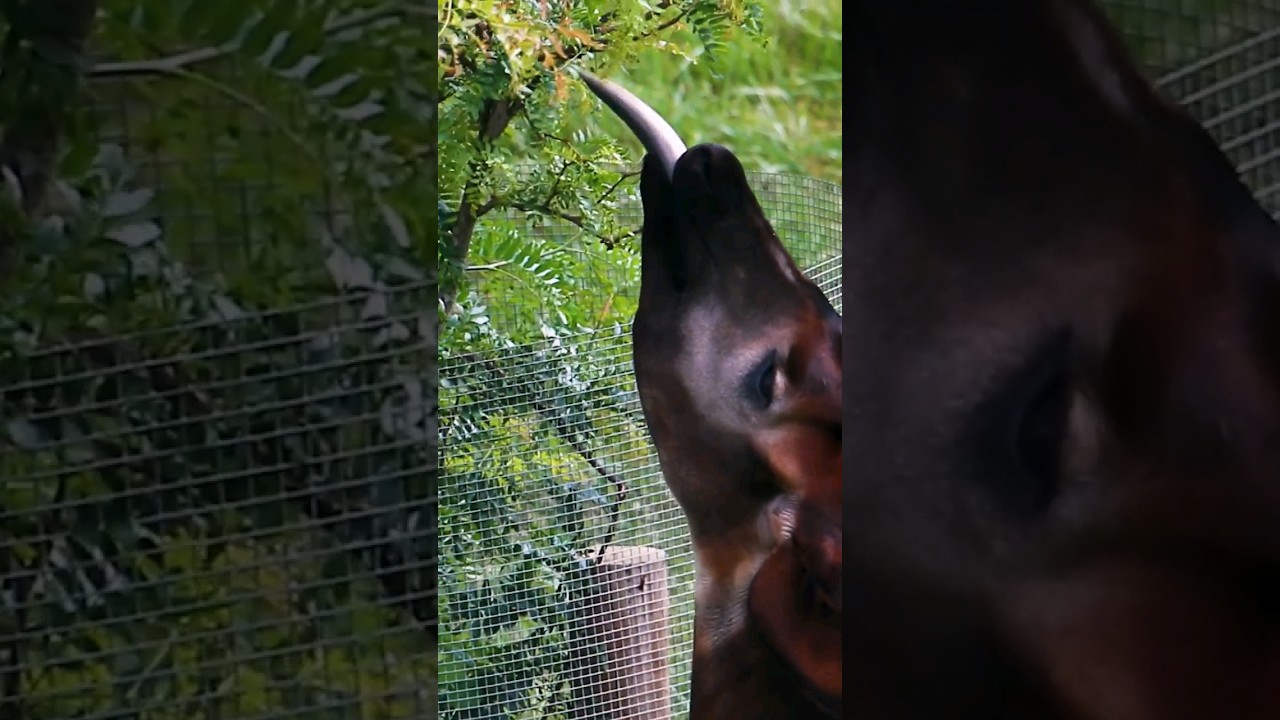Summary:
1. Introduction to the Romakari’s Sneaky Snacking Habits
2. The Importance of Natural Cover for Okapis
3. Struggles in Regrowing Natural Cover
4. The Persistent Romakari
5. The Future of Okapi Habitats
Introduction:
Located in Des Moines, Iowa, Blank Park Zoo is home to many unique and captivating creatures, including the elusive okapi. These beautiful animals are known for their long necks, zebra-like stripes, and gentle natures. In recent months, the zookeepers have been facing a challenge in maintaining their okapi’s natural habitat due to a massive storm that destroyed their trees and disrupted their foliage. To fix the damages, the zookeepers have been working tirelessly to regrow the natural covering of the okapi’s enclosure. However, little do they know, the Romakari, a native species of rodent in the Democratic Republic of Congo, has been sneaking in and snacking away at the new growth. This article delves into the unique and fascinating elements of the Romakari’s sneaky snacking habits, the importance of natural cover for okapis, the struggles of regrowing the okapi habitat, and the future of okapi habitats.
The Importance of Natural Cover for Okapis:
In the wild, okapis utilize their natural cover to protect themselves against predators and unwanted visitors. Their long necks and zebra-like stripes allow them to blend in with their surroundings, while their foliage covering aids in creating a barrier from outside elements. Due to the okapi’s reclusive nature, their habitat must be carefully tended to, ensuring they have adequate coverage to camouflage themselves and deter predators.
In addition to providing protection, natural coverage also plays a vital role in the okapi’s conservation. Okapis live in the Ituri Forest in the Democratic Republic of Congo, an area plagued by deforestation and poaching. Due to their secluded nature, okapis can be challenging to locate and track in the wild. Hence, their natural covering is often the only sign of their presence. Therefore, the okapi’s natural habitat is necessary for them, and conservationists are trying to locate them in the wild.
Struggles in Regrowing Natural Cover:
After the severe storm, the zookeepers at Blank Park Zoo realized the enormity of the damage and the time and resources needed to restore the natural cover in the okapi’s enclosure. In an interview, one zookeeper mentioned that it was hard to regrow the natural cover because of the wildlife’s habits and the harsh climate conditions in Iowa. The zookeepers utilized various tactics to encourage the regrowth of foliage in the enclosure, including providing the right amount of sunlight, water levels, and soil nutrients.
The Persistent Romakari:
Despite the zookeepers’ best efforts, the Romakari, a species of rodent native to the Democratic Republic of Congo, has proven to be challenging in their attempts to regrow the natural cover. These sneaky species have been known to dig holes in the enclosure to get through the gaps in the natural coverage, often nibbling away at the new growth. Their persistence in snacking has resulted in the zookeepers adjusting their tactics and trying new methods to combat their sneaky snacking habits.
The Future of Okapi Habitats:
The incident at Blank Park Zoo highlights the importance of natural cover for the okapi and conservationists’ struggles in regrowing and maintaining their habitats. In the wild, illegal logging, poaching, and habitat fragmentation continue to threaten the population of okapis. Despite this, conservation efforts are ongoing in Congo to prevent further habitat depletion and wildlife crime. These conservation efforts include the creation of wildlife conservancies and working with local communities to promote sustainable land use practices.
Conclusion:
The Romakari’s sneaky snacking habits may minor sue in the grand scheme. Still, it reinforces the importance of maintaining the natural covering in the okapi’s environment. The incident at Blank Park Zoo highlights the difficulties in regrowing natural cover and the challenges conservationists face in protecting endangered species like the okapi. It is crucial to continue conservation efforts in the wild to ensure the survival of these majestic creatures, and by doing so, we are preserving the natural habitats of many other animal species that call the Congo basin home.
*****
Source Description
after a considerable storm knocked down some of our trees, keepers have been trying to regrow the natural cover for the okapi. But Romakari can’t wait to snack!


